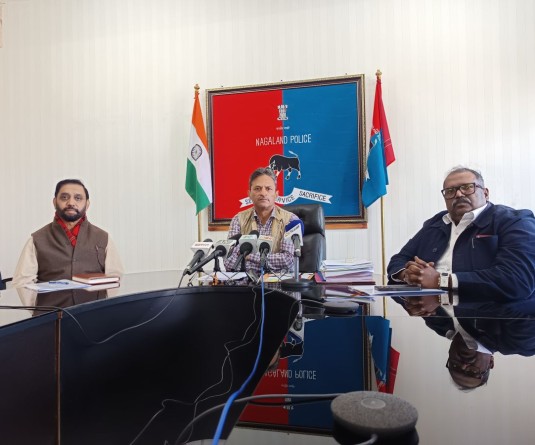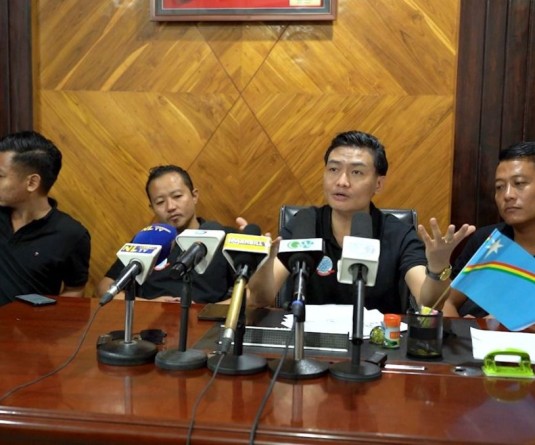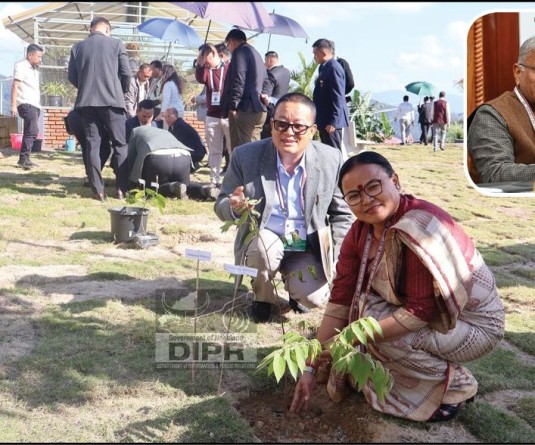
• Distribution system upgrades on courtesy IPDS
• Meanwhile supply-demand constraints persist
Morung Express News
Dimapur | July 5
The Central government’s Integrated Power Development Scheme (IPDS) breathed a lease of new life into Nagaland’s bleak electricity situation. Originally sanctioned in August 2015, the execution of the project made a delayed start in January 2018.
A partial overhaul of the electricity distribution network, covering 12 towns, was the scope of works with the bulk of the funding concentrated in revenue and load intensive Dimapur.
Installing new distribution transformers (DT) as well as upgrading and mending existing ones, replacing ageing 11kv lines, renovation of sub-stations and “metering” were the focus of the project. Half way into the year, department officials informed “the works are on in full swing.” According to one official, “civil works” for installing new DTs have started in tandem with upgrading of existing (overloaded) DTs. Modernising control rooms and “metering” is also on, said the official, while adding that replacing 11Kv lines along with poles will start soon.
“Right of Way (RoW) will be the biggest obstacle to connect lines,” commented another official on the prospect of stringing new lines. On this, the first official commented, “Our apprehension is getting the RoW. We are hoping we won’t encounter any problem (from land owners).”
Acquiring land or the RoW, besides many others, has always stood as a barrier to executing developmental projects in Nagaland. While the department worry over getting the RoW for new lines, it was though added that land owners have been very cooperative as far as letting land for installing new DTs was concerned.
No definite timeframe was specified as to when the works would complete.
The ‘current’ scenario
Easing demand pressure on the distribution network and a likely smooth supply is the goal of the ongoing works, provided it gets done as envisaged.
Presently however, tension persists. In addition to the scorching summer and over loaded equipments, the FIFA World Cup has had the department personnel on tenterhook. Unpredictability plagues the supply network, in particular the urban core, as it has been for years.
The root of this problem, according to the official, lies in a distribution sub-station (SS) stretched beyond limit. The Metha 33/11Kv (20Mva) SS, which handles supply to densely populated urban localities, including the key commercial zones, is gravely overloaded.
“Metha sub-station’s maximum power output is only 16MW. On the other hand, the actual demand has reached 20MW,” he said. A shortfall of 4MW translates into a regular load-shedding schedule feeder-wise or area-wise. He added that the sub-station has 6 feeders (supply lines) and they are sometimes compelled to shut down 3 feeders during peak hours interchangeably to shed load on equipments.
The solution to the predicament is either scaling up the load capacity or transferring some of the supply-demand load to another or new distribution sub-station.
Under the IPDS (2nd phase), a new sub-station has been approved, which would likely come up at Forest colony. “If this comes up, it will greatly ease the load on Metha sub-station,” said the official.
He expressed hope that the Forest department would part with the required land, while disclosing that “tendering process” is on to set up the proposed sub-station.
While building it, in all likelihood, would take not less than a year, he emphasised an immediate need to lessen the strain at Metha sub-station by adopting a stop-arrangement. The idea to work this out is by installing a 2.5Mva or 5Mva transformer somewhere between Nagarjan and Metha sub-stations. He said that Thahekhu village would be the most convenient location to place it as an interim measure.
If this works out, provided the village is taken into confidence, it will relieve the load at Metha sub-station by almost 3MW, he said. The village will draw power directly from it and not from Metha sub-station, which would also imply a stable supply for the village.
Meanwhile, the other sub-stations - Burma Camp 66/11Kv and Industrial Estate 33/11Kv – do have system and distribution constraints but not as intense as it is at Metha sub-station, he said. These two stations schedule load-shedding during peak hours nevertheless.
As per the official, establishing 2 new sub-stations - a 33/11Kv (10Mva) at Naga Shopping Arcade (Super Market) another 66/11Kv (20Mva) at Sovima has to a certain extent lightened the load on pre-existing distribution stations, which also includes the 33/11Kv (10Mva) at CIHSR, 4th Mile; Dairy Farm 66/11Kv (10Mva) and an additional 33/11Kv (2.5 + 5Mva) sub-station at Nagarjan.






